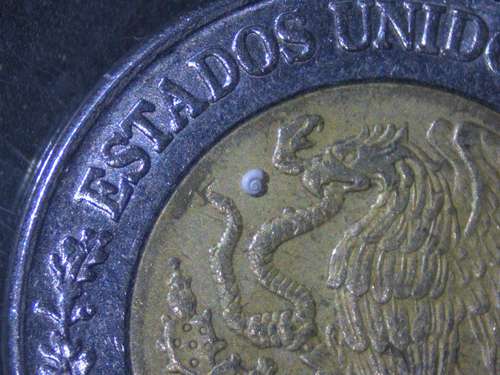Coffee tricks the brain: "It doesn't give you energy, it just masks the signals that you need it."

Coffee tricks the brain: it doesn't give you energy, it just covers up the signals that you need it.
The organ stops detecting fatigue, even if you are still exhausted inside
, says science communicator Sandra Ortonobes
▲ Coffee stimulates neuronal activation and triggers the release of dopamine. Photo by Pablo Espinosa
Europa Press
La Jornada Newspaper, Thursday, August 7, 2025, p. 6
Madrid. For years, millions of people have started their day with a cup of coffee as if it were an infallible source of energy. However, behind this apparent vitality lies a more complex and, to some extent, deceptive brain mechanism. Science communicator and biomedical expert Sandra Ortonobes, known as La Hiperactina (Hyperactin ), explained in one of her most recent videos why coffee doesn't give energy
, as is often believed, but simply masks real fatigue.
As he explains, it all starts with adenosine, a substance the brain naturally produces as we wake up. Its function is clear: to progressively accumulate to induce the sensation of sleep and signal that it's time to rest. But that's where caffeine comes into play.
Caffeine is shaped very similarly to adenosine
, explains Ortonobes. It sneaks into your receptors and prevents adenosine from doing its job. Your brain stops detecting fatigue, even though you're still exhausted inside
. So even if you suddenly feel more alert, that energy
isn't real: your physical reserves haven't been replenished, just the body's alarm bells have been silenced.
What does science say about this effect? This explanation coincides with what the European Food Information Council (EUFIC) reports, which details how caffeine, by blocking adenosine receptors in the brain, stimulates neuronal activation and triggers the release of neurotransmitters such as dopamine and norepinephrine. This process is what generates the sensation of being more awake and focused, even though the body still needs rest.
Furthermore, the EUFIC emphasizes that the effects of caffeine can last for hours, given its half-life in the body is about five hours. This means that after consuming a cup of coffee, the stimulating effects can take a while to wear off, which can disrupt natural sleep patterns if consumed late in the day.
The caffeine crash
Temporarily blocking adenosine doesn't stop its buildup, but rather delays it. Therefore, when caffeine is metabolized and its effects wear off, that accumulated adenosine kicks in suddenly, causing what many recognize as the coffee crash
. Fatigue, lack of concentration, or even sudden drowsiness can be some of its manifestations.
And if consumed regularly, dependence can also occur. Various scientific studies, such as a review published in Psychopharmacology , support the idea that regular caffeine consumption can lead to a degree of dependence. Quitting caffeine abruptly can cause withdrawal symptoms such as irritability, fatigue, and headaches.
So, is coffee bad? Not necessarily. The EUFIC clarifies that, in healthy people, moderate caffeine consumption—up to 400 milligrams a day, equivalent to four cups of filtered coffee—can be part of a healthy diet. It may even offer benefits for concentration, alertness, and physical performance. However, excessive or inadequate consumption, especially in people with sensitivity or health problems, can lead to side effects.

▲ The world's smallest snail on a coin. Photo courtesy of Alexander Czaja
Vianney Carrera
Correspondent
La Jornada Newspaper, Thursday, August 7, 2025, p. 6
Saltillo, Coahuila, The world's smallest snail lives in Coahuila, inside a cave 10 kilometers from the capital of the Land of the Dinosaurs.
This is the new species Microphreatus saltillensis , which was found in the area of the Los Chorros spring, and whose shell measures 0.7 millimeters.
Alexander Czaja, a professor at the Faculty of Biological Sciences at the Juárez University of Durango (UJED), and his team, after 10 years of working with freshwater snails, published their findings in the journal Zootaxa in New Zealand, where they highlighted that this specimen is also a new genus.
We took a sample of the sediment, and under the microscope, white dots appeared. This snail is very small compared to what was known in the northern Mexican region
, Czaja told La Jornada .
He emphasized that after the sample was taken and analyzed, a bibliographical investigation had to be conducted to verify whether this mollusk was the smallest in the world.
After conducting the corresponding studies, the discovery was published in June 2025 together with researchers Gabriel Fernando Cardoza, Jorge Luis Becerra, José Luis Estrada, Fernando Alonzo, Verónica Ávila, and Ana Alejandra Valenzuela, all members of the UJED Gómez Palacio.
Czaja noted that this discovery has a significant impact on the field, as in addition to increasing knowledge of this area, it may suggest that this is not the only mollusk species that can live underground.
According to the researcher, Microphreatus saltillensis is a transparent mollusk that lives among the grains of sand in that area, and to complement his research, it is necessary to extract the water to find it and, thus, analyze other aspects of the new species such as what it eats, how it reproduces, etc.
What follows is to understand the biology and ecology of this new species; all of these aspects come in later studies, and what follows is the conservation of this organism
, he explained.
He emphasized that the discovery of this new species does not rule out the possibility of finding more varieties of mollusks in that area.
jornada





